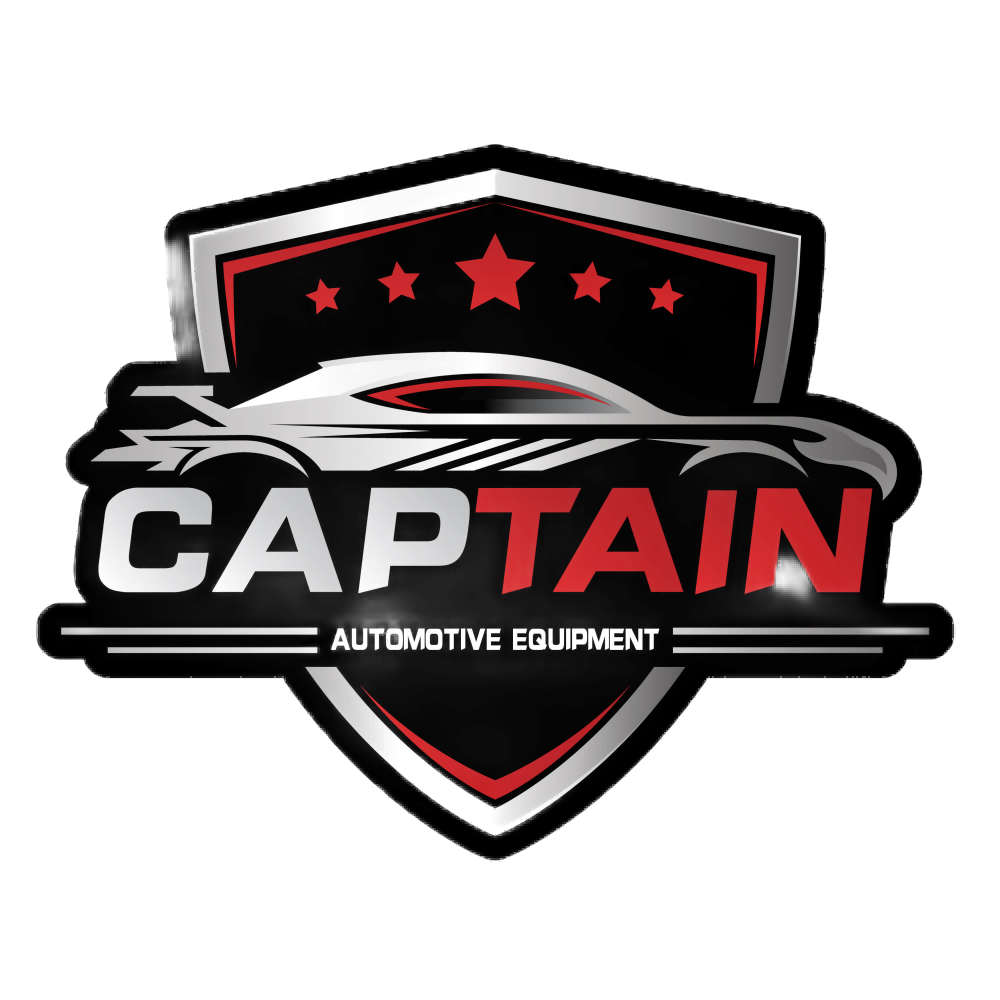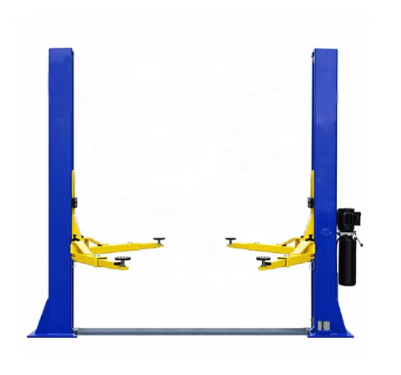आधुनिक लिफ्टिंग समाधान के साथ ऑटो मरम्मत संचालन का रूपांतरण
ऑटोमोटिव मरम्मत उद्योग नवाचारी प्रौद्योगिकियों और उपकरणों के साथ विकसित होता रहता है जो संचालन को सरल बनाते हैं। इन उन्नतियों में, पोर्टेबल कार लिफ्ट एक गेम-चेंजिंग उपकरण के रूप में उभर रही है जो मैकेनिक और ऑटो शॉप्स द्वारा वाहन रखरखाव के दृष्टिकोण को क्रांतिकारी ढंग से बदल रही है। यह बहुमुखी उपकरण पेशेवर मैकेनिक और DIY उत्साही दोनों के बीच बढ़ती लोकप्रियता हासिल कर रहा है, जो ऑटोमोटिव मरम्मत कार्य में अभूतपूर्व लचीलापन और दक्षता प्रदान करता है।
पारंपरिक निश्चित लिफ्ट, भले ही विश्वसनीय हों, उनमें कुछ सीमाएँ होती हैं जो कार्यप्रवाह में बाधा डाल सकती हैं और मरम्मत क्षमता को सीमित कर सकती हैं। एक पोर्टेबल कार लिफ्ट , हालांकि, सुविधा और अनुकूलन की एक नई आयाम पेश करता है जो मरम्मत संचालन में महत्वपूर्ण सुधार ला सकता है। चाहे पेशेवर गेराज के वातावरण में हो या घर की वर्कशॉप में, ये मोबाइल लिफ्टिंग समाधान अपने महत्व को कई तरीकों से साबित कर रहे हैं।
पोर्टेबल को समझना कार लिफ्ट प्रौद्योगिकी
आधुनिक डिज़ाइन और इंजीनियरिंग विशेषताएँ
आज की पोर्टेबल कार लिफ्ट में उन्नत इंजीनियरिंग सिद्धांतों को शामिल किया गया है जो सुरक्षा और कार्यक्षमता दोनों को सुनिश्चित करते हैं। इन इकाइयों में आमतौर पर उच्च-ग्रेड स्टील का निर्माण, सटीक हाइड्रोलिक प्रणाली और मजबूत लॉकिंग तंत्र शामिल होता है। डिज़ाइन का उद्देश्य स्थिर लिफ्टिंग क्षमता प्रदान करना होता है जबकि गतिशीलता बनाए रखते हुए, जिसमें कई मॉडल कई टन वजन वाले वाहनों का समर्थन करने में सक्षम होते हैं।
पोर्टेबल कार लिफ्ट के पीछे की तकनीक में स्वचालित समतलीकरण प्रणालियों, अतिभार सुरक्षा और विफलता-सुरक्षित तंत्र जैसी स्मार्ट सुरक्षा सुविधाओं को शामिल करने के लिए विकास हुआ है। ये नवाचार उपकरण को न केवल पोर्टेबल बनाते हैं बल्कि पेशेवर सेटिंग्स में दैनिक उपयोग के लिए अत्यधिक विश्वसनीय भी बनाते हैं।
उपलब्ध प्रकार और विविधताएँ
बाजार में कई प्रकार की पोर्टेबल कार लिफ्ट उपलब्ध हैं, जिनमें से प्रत्येक को विशिष्ट अनुप्रयोगों के लिए डिज़ाइन किया गया है। स्किसर लिफ्ट उत्कृष्ट स्थिरता प्रदान करते हैं और सीमित स्थानों के लिए आदर्श होते हैं। दो-खंभे वाले पोर्टेबल लिफ्ट वाहन के निचले हिस्से तक बेहतर पहुँच प्रदान करते हैं, जबकि चार-खंभे वाले संस्करण दीर्घकालिक भंडारण और रखरखाव कार्य के लिए आदर्श होते हैं।
क्विक-जैक प्रणालियों को उनकी अत्यधिक पोर्टेबल प्रकृति और त्वरित तैनाती की क्षमता के कारण लोकप्रियता प्राप्त हुई है। ये विविधताएँ यह सुनिश्चित करती हैं कि चाहे मरम्मत ऑपरेशन की विशिष्ट आवश्यकताएँ कुछ भी हों, उन आवश्यकताओं के अनुरूप एक पोर्टेबल कार लिफ्ट समाधान उपलब्ध है।

पेशेवर वातावरण में संचालन लाभ
स्थान अनुकूलन और लचीलापन
पोर्टेबल कार लिफ्ट का सबसे महत्वपूर्ण लाभ यह है कि यह कार्यस्थल की दक्षता को अधिकतम करने में सक्षम होती है। स्थायी स्थापना के विपरीत, इन लिफ्ट को उपयोग न होने के समय स्थानांतरित और संग्रहित किया जा सकता है, जिससे मूल्यवान फर्श की जगह मुक्त हो जाती है। इस लचीलेपन के कारण मरम्मत दुकानें अपने कार्यस्थल को दैनिक आवश्यकताओं और कार्यभार के आधार पर पुनः व्यवस्थित कर सकती हैं।
गतिशीलता कारक यांत्रिकी को एक ही सुविधा के भीतर विभिन्न स्थानों पर काम करने या आवश्यकता पड़ने पर लिफ्ट को अन्य स्थानों पर ले जाने में भी सक्षम बनाता है। यह अनुकूलन विशेष रूप से मोबाइल यांत्रिकी या उन दुकानों के लिए मूल्यवान हो सकता है जिन्हें मौसमी रूप से अपनी व्यवस्था को समायोजित करने की आवश्यकता होती है।
समय और लागत की दक्षता
पोर्टेबल कार लिफ्ट के कार्यान्वयन से मरम्मत संचालन में महत्वपूर्ण समय की बचत हो सकती है। त्वरित स्थापना और विघटन के समय के कारण नौकरियों के बीच कम समय नष्ट होता है। इसके अतिरिक्त, लिफ्ट को जहां आवश्यकता होती है वहां सटीक रूप से स्थापित करने की क्षमता अनावश्यक गति को कम करती है और कार्यप्रवाह दक्षता में सुधार करती है।
वित्तीय दृष्टिकोण से, पोर्टेबल कार लिफ्ट अक्सर स्थायी स्थापना की तुलना में अधिक लागत प्रभावी समाधान प्रस्तुत करते हैं। इनके लिए न्यूनतम स्थापना लागत की आवश्यकता होती है, सुविधा संशोधन की आवश्यकता कम होती है, और यदि व्यवसाय स्थानांतरित या विस्तारित होता है तो इन्हें आसानी से स्थानांतरित किया जा सकता है।
सुरक्षा और रखरखाव की विवेचना
अनिवार्य सुरक्षा प्रोटोकॉल
हालांकि पोर्टेबल कार लिफ्ट कई लाभ प्रदान करते हैं, प्रभावी उपयोग के लिए उचित सुरक्षा प्रक्रियाएं महत्वपूर्ण हैं। लिफ्टिंग घटकों, हाइड्रोलिक प्रणालियों और सुरक्षा लॉक्स का नियमित निरीक्षण दैनिक संचालन का हिस्सा होना चाहिए। तकनीशियनों को उचित लिफ्टिंग तकनीक और भार वितरण सिद्धांतों में व्यापक प्रशिक्षण दिया जाना चाहिए।
इसके अतिरिक्त, सुरक्षा जांचों की स्पष्ट दस्तावेज़ीकरण बनाए रखना और सख्त संचालन दिशानिर्देशों को लागू करना सुनिश्चित सुरक्षित उपयोग को सुनिश्चित करने में मदद करता है। इसमें भार सीमाओं, उचित वाहन स्थिति और आपातकालीन प्रक्रियाओं की समझ शामिल है।
रखरखाव की आवश्यकताएं
लंबी आयु और विश्वसनीय प्रदर्शन सुनिश्चित करने के लिए, पोर्टेबल कार लिफ्ट की नियमित रखरखाव की आवश्यकता होती है। इसमें हाइड्रोलिक तरल स्तर की जाँच, गतिशील भागों को स्नेहन करना और लिफ्टिंग पैड तथा सुरक्षा तालों जैसी घिसावट वाली वस्तुओं का निरीक्षण शामिल है। एक नियमित रखरखाव कार्यक्रम बनाने से अप्रत्याशित बंदी से बचा जा सकता है और उपकरण के सेवा जीवन को बढ़ाया जा सकता है।
प्रमाणित तकनीशियन द्वारा अनुशंसित अंतराल पर पेशेवर सेवा से गंभीर समस्याओं में बदलने से पहले संभावित मुद्दों की पहचान करने में मदद मिल सकती है। रखरखाव के प्रति यह प्रो-एक्टिव दृष्टिकोण निवेश पर रिटर्न को अधिकतम करता है और लगातार प्रदर्शन सुनिश्चित करता है।
व्यापार प्रभाव और निवेश पर रिटर्न
उत्पादकता में सुधार
पोर्टेबल कार लिफ्ट के क्रियान्वयन से वर्कशॉप उत्पादकता में मापने योग्य सुधार हो सकता है। वाहन सेटअप समय में तेजी, मरम्मत क्षेत्रों तक बेहतर पहुँच और विभिन्न प्रकार के वाहनों को कुशलता से संभालने की क्षमता सभी बढ़ी हुई उत्पादन क्षमता में योगदान देते हैं। इस बढ़ी हुई उत्पादकता का अक्सर सीधे ग्राहक संतुष्टि और व्यापार विकास में अनुवाद होता है।
जिन वर्कशॉप ने पोर्टेबल कार लिफ्ट अपनाई हैं, वे अक्सर उच्च गुणवत्ता वाले मानक बनाए रखते हुए प्रति दिन अधिक कार्य संभालने में सक्षम होने की रिपोर्ट करते हैं। इन प्रणालियों की बहुमुखी प्रकृति संसाधन आवंटन और अधिक प्रभावी समय प्रबंधन की अनुमति देती है।
दीर्घकालिक आर्थिक लाभ
दीर्घकालिक वित्तीय प्रभाव पर विचार करते समय, पोर्टेबल कार लिफ्ट अक्सर एक समझदारी भरा निवेश साबित होती हैं। प्रारंभिक लागत आमतौर पर बढ़ी हुई सेवा क्षमता, कम श्रम समय और सुधारित कार्यप्रवाह दक्षता से ऑफसेट हो जाती है। बड़े सुविधा परिवर्तन के बिना संचालन का विस्तार या संशोधन करने की क्षमता भी मूल्यवान व्यापार लचीलापन प्रदान करती है।
इसके अलावा, सेवा की पेशकश में वृद्धि की संभावना और विभिन्न प्रकार के वाहनों को संभालने की क्षमता से नए राजस्व स्रोत और बाजार अवसर उत्पन्न हो सकते हैं। आज के तेजी से बदलते ऑटोमोटिव उद्योग में यह अनुकूलन क्षमता विशेष रूप से मूल्यवान है।
अक्सर पूछे जाने वाले प्रश्न
एक पोर्टेबल कार लिफ्ट सुरक्षित रूप से कितना भार संभाल सकती है?
अधिकांश पेशेवर-ग्रेड पोर्टेबल कार लिफ्ट 6,000 से 10,000 पाउंड तक के भार को सुरक्षित रूप से संभाल सकती हैं, हालांकि विशिष्ट क्षमता मॉडल और निर्माता के अनुसार भिन्न हो सकती है। निर्माता की विशिष्टताओं की जांच करना और निर्धारित क्षमता से अधिक कभी न जाना अत्यंत महत्वपूर्ण है।
एक पोर्टेबल कार लिफ्ट के लिए किस प्रकार की बिजली आवश्यकताएं होती हैं?
बिजली की आवश्यकताएं मॉडल के अनुसार भिन्न होती हैं, लेकिन अधिकांश पोर्टेबल कार लिफ्ट मानक 110V सॉकेट पर काम करती हैं। कुछ भारी ड्यूटी मॉडल को 220V बिजली की आवश्यकता हो सकती है। अधिकतम पोर्टेबिलिटी के लिए बैटरी से चलने वाले विकल्प भी उपलब्ध हैं।
एक पोर्टेबल कार लिफ्ट को सेट अप करने और तोड़ने में कितना समय लगता है?
उचित प्रशिक्षण के साथ, अधिकांश पोर्टेबल कार लिफ्ट को 5-15 मिनट में स्थापित किया जा सकता है और इतने ही समय में असेम्बल भी किया जा सकता है। आवश्यक समय लिफ्ट के प्रकार, अनुभव के स्तर और विशिष्ट मॉडल विशेषताओं पर निर्भर करता है।

